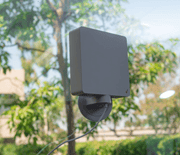
Same Day
Shipping for
Online Orders
Before 2pm
30 day
Money Back
Guarantee
The Telecommunication industry is embarking on a significant step into 5G technology and even though there is a bit of uncertainty on the road ahead Powertec is at the forefront of identifying solutions to benefit our customers. We thought this would be a good opportunity to update you on 5G developments.
5G is the 5th generation of mobile networks, a significant evolution of today’s 4G LTE networks. 5G technology has been designed to meet the very large growth in data and connectivity of today’s modern society, the internet of things with billions of connected devices, and tomorrow’s innovations. 5G technology will provide the speed, low latency and connectivity to enable a new generation of applications, services and business opportunities that have not been seen before.
5G technology can be classified by two kinds of frequency bands. First are Sub-6 GHz bands where the frequency transmitted from mobile phone towers are less than 6GHz. Transmitting on mid and low-frequency bands under 6GHz frequency. The Sub 6 5G runs on similar frequencies to what the 4G network uses currently, but on the higher end of the spectrum. Our Australian telecommunications providers are currently using 3.5GHz spectrum for their 5G networks.
The second frequency range mmWave 5G is the fastest form of 5G, operating on incredibly high frequencies such as 26GHz. These high frequencies have very large bandwidths, so they’re ideal for keeping everyone connected in busy environments. mmWave higher frequency means it can offer a lot of capacity and bandwidth over a shorter range. The mmWave cells broadcast a signal up to a few hundred metres from the base station, meaning it’s best suited for areas where a high number of users are concentrated – places like shopping centres; crowded inner-city train stations and even stadiums can all benefit from the capabilities of mmWave.
mmWave is not new to Australia it is already used for wireless services like fixed point-to-point communications infrastructure and satellite internet. Recent advancements have now opened the digital door to high-speed wireless.
Frequency Range-1 Sub-6 GHz (less than 6GHz)
Frequency Range-2 mmWave (above 24GHz)
In relation to mmWave, we understand that there is a bit of uncertainty currently in the market, however, the Australian Communications and Media Authority (ACMA) mmWave auctions are the first steps in setting the framework of 5G mmWave in Australia.
The ACMA is facilitating a mix of licence types in the 26 and 28 GHz bands, including area-wide apparatus licences (AWLs), spectrum licensing in 26 GHz for the dense deployment of networks in high population areas, and class licences for ubiquitous low power devices. AWL’s provide users with a more flexible licence type that can be scalable to a licensee’s needs.
The ACMA lists the successful bidders of the area-wide apparatus licensing in the 26 and 28 GHz bands as Dreamtilt, Field Solutions Group, Inmarsat, MarchNet, Nokia, NBN Co, New Skies Satellites/SES, O3B/SES, OptiComm, Optus, Starlink (SpaceX), Telstra, Viasat, Vocus and WorldVu (One Web). It noted that several of the applicants intend to provide wireless broadband services across all states and territories and across urban, regional and rural areas, while highlighting the fact that there had been ‘considerable uptake from fixed satellite service providers across Australia, including from existing providers and new entrants to the Australian satellite market’.
The 26 GHz (25.1 – 27.5 GHz) band spectrum auction is set to take place in April with the second auction of AWL’s also planned for late 2021 for low band 5G spectrum. This means it is unlikely we’ll see any mmWave 5G connectivity in Australia in late 2021 or early 2022.
Powertec is in the process of introducing an outdoor Fixed Wireless Access solution to bring Sub6 5G data speeds to business and residential customers. Fixed Wireless Access (FWA) enables network operators to deliver ultra-high-speed broadband to suburban and rural areas, supporting home and business applications where fibre is too expensive to install and maintain. FWA utilises data transmitted over radio signals to connect a premise to the cellular broadband network. We are conducting product trials at the Queensland head office and we should be able to provide an outdoor Fixed Wireless Access solution in early 2021.
Powertec is continuing to work with Nextivity on the next generation of repeaters, initially with the 5G Sub6 spectrum moving into the mmWave products in the future. Depending on the 5G frequency allocation some of the existing Nextivity products can be configured to repeat the 5G signal.
Powertec has been in discussion with 5G mmWave providers in determining what is currently available and which products will benefit our customers in delivering fast 5G speeds indoors. These products are either two box systems consisting of a Network Unit (NU) and Coverage Unit (CU) or on glass-based systems to deliver 5G mmWave frequencies.
5G mmWave Repeater product examples:



We are excited about providing 5G services to our customers and look forward to working with you during these exciting times. If you require any additional information in relation to our 5G products, please let us know how we can work together to benefit your customers. Contact us today at sales@powetec.com.au or 1300 769 378

Powertec provides full network design
services.
Contact our team to begin your automation journey today on 1300 769 378 or solutions@powertec.com.au





